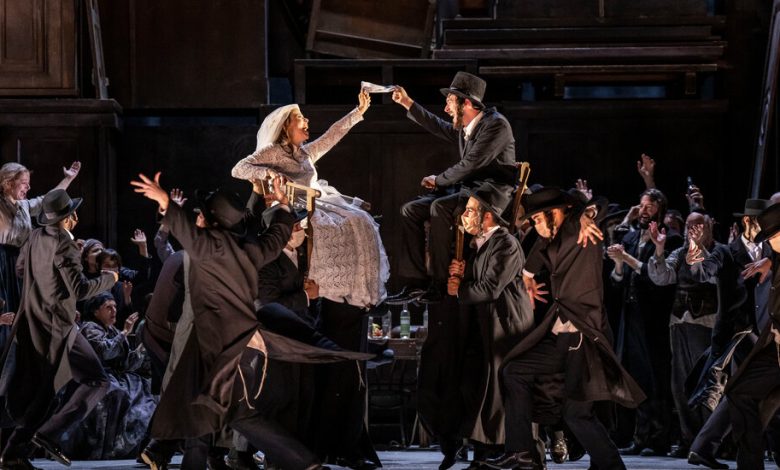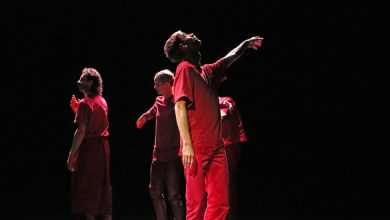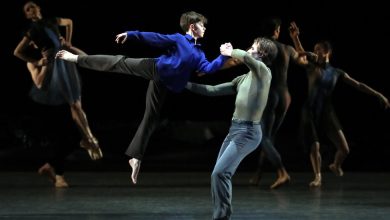America’s Most Interesting Opera Destination? The Midwest

New York City, despite its bona fides as a cultural capital, can be surprisingly provincial when it comes to opera.
As ever-fewer international directors pass through with their productions — events that, once upon a time, could reliably be found at Lincoln Center’s festivals or the Brooklyn Academy of Music — and New York City Opera exists as a shell of its former self, the only major player left in town is the Metropolitan Opera, an increasingly adventurous if still conservative house.
It’s a different story elsewhere in the United States. While the Met prepares to start its season next week, two other companies opened new productions on Saturday, with imaginative directors who won’t grace the Met stage any time soon but should: at the Lyric Opera of Chicago, a “Fiddler on the Roof” by Barrie Kosky, and at Detroit Opera, a version of “Die Walküre” by Yuval Sharon.
I saw both over the weekend, which made for an unlikely pairing: “Fiddler,” Bock and Harnick’s golden-age musical, on Saturday, and the third act of “Walküre,” from Wagner’s “Ring,” on Sunday. But while there were subtle thematic connections between the two, they were more notable for simply happening — the latest examples of conceptual daring and directorial promise beyond New York City limits (among others this season, like productions of Ethel Smyth’s “The Wreckers” in Houston and Dylan Mattingly’s “Stranger Love” in Los Angeles).
Kosky’s “Fiddler” is an import from the Komische Oper in Berlin, the house he ran for a decade before stepping down this year. It’s both a preview — he will direct one musical each of the next five seasons — and a glimpse at his range as one of Europe’s leading directors, an artist capable of shattering minimalism, in productions like “Kat’a Kabanova” at the Salzburg Festival in August, and archaeological curiosity, in the obscure operettas he has reintroduced to Germany.
There are hallmarks of his showman style throughout this “Fiddler,” but perhaps the most Koskyesque accomplishment here is his revealing of the musical as the masterpiece that it is — perennially relevant, smartly constructed and richly complicated — rather than what many critics have seen as borscht belt kitsch. His staging, in which no emotion is ever forced, is funny only in the way that life can be: dark humor in the face of absurdity, joy at a harmless misunderstanding.
Most natural, perhaps, is the way in which Kosky’s take on the musical — unaltered, but for welcome Yiddish additions — unfolds as an act of memory, at once melancholy and warm. It begins with something like a summoning of the past: A child (Drake Wunderlich) rolls across the stage on a scooter, beats emanating from his headphones. At the center is a wardrobe; and inside is a violin, on which the boy begins to play the show’s opening theme. He pauses, and the tune continues with a whistle from within.
Out from the wardrobe steps Tevye — Steven Skybell, who played the role in the recent Yiddish-language “Fiddler” Off Broadway and who again lends the character the sculptural dimensions of a Shakespeare protagonist — then the rest of the villagers from Anatevka. Among them are a wealth of sympathetic, skilled performers: Debbie Gravitte as a resilient Golde; Lauren Marcus, Austen Danielle Bohmer and Maya Jacobson as her and Tevye’s pathbreaking daughters; Drew Redington as a meek then audacious Motel; Adam Kaplan as a brazen yet desperate Perchik; Michael Nigro as a honeyed Fyedka; and more.
Many more: This is a “Fiddler” beyond Broadway proportions, with a cast large enough to fill out a shtetl and a full orchestra, conducted with committed enthusiasm and dancelike flexibility by Kimberly Grigsby. Yet while the forces were operatic, the scenic design, by Rufus Didwiszus, wasn’t; the first act sprang out of and around a unit set of wardrobes and dressers stacked like a barricade, some of their doors and drawers opened to reveal lingering clothes, as if they had been hastily emptied and gathered in a public square. You could imagine it as a memorial.
To what? Take your pick. “Fiddler” is specific, a tale of change coming rapidly to the traditions of Anatevka in the early 20th century; yet it has resonated time and again, whether for its themes of rigidity amid progress or for its depictions of intolerance and exile. The last Broadway revival, in 2015, was haunted by the Syrian refugee crisis. This year, it’s impossible to see the show’s characters — inhabitants of present-day Ukraine — haphazardly packing up their lives for an unknown future and not think of the war there.
And yet Kosky’s staging is also entertaining. Otto Pichler’s choreography, a nod to and break from Jerome Robbins’s original, left the audience on Saturday roaring. And the production’s nearly three hours breeze by. It is the finest “Fiddler” I’ve seen, one that could be adapted with ease and success on Broadway — where, in addition to the Met, Kosky belongs.
Sharon is also woefully absent from New York’s stages. The brightest director in the United States, he put on a drive-through “Götterdämmerung” in a Detroit parking garage when live performance was virtually nonexistent during the pandemic and, as artistic director of Detroit Opera, has made that city an opera destination — along with Los Angeles, where his company the Industry has created the most innovative, original productions of recent years.
His excerpt from “Die Walküre” — the 85-minute third act, called here “The Valkyries” — reflects Wagner’s ambitions for the work’s stage magic, but also the state of opera performance in our time, by presenting it as a sci-fi movie filmed against a green screen and rendered live with the help of Kaitlyn Pietras and Jason H. Thompson from PXT Studio. Yet a casual audience member could also enjoy it at face value, a self-contained drama with the subtlety and punch of short fiction.
The production places the “Ring” in the metaverse, with Valhalla as a digital creation whose back story is recounted by Sigourney Weaver in a video introduction. Having a queen of sci-fi make this cameo is among the show’s campy touches, like Carlos J. Soto’s winking costumes, which suggest “Tron” and its low-budget cousins of the 1970s and ’80s.
On the bifurcated stage, singers (accompanied by Andrew Davis leading a reduced but undiminished orchestration by David Carp, to accommodate the theater’s smaller pit) perform in front of the green screen — on green props, and supported by stage hands in green body suits, who, for example, wave capes during the “Ride of the Valkyries.” At the same time, the film, which reflects changes in scale and placement on a digital landscape, is shown above. The singers, especially the soprano Christine Goerke, still earning her title as a reigning Brünnhilde, rise to the challenge of the close-ups with actorly delivery; she, facing an indefinite slumber atop a mountain as punishment, sobs with audibly shallow breathing.
At quick glance, Sharon’s production has the appearance of window dressing; the action ultimately unfolds in a conventional way. But, as ever, the medium is the message.
“The Valkyries” could be seen as a meditation on opera in the 21st century: the proliferation of video in stagings, as well as pandemic-era livestreams and the genre of studio productions that grew out of them. What, now, is a live performance? Sharon provokes a tension of perception, with the eye and ear unsure of whether to focus on the singers or the screen. What is lost, and gained, in their interplay? He doesn’t offer an answer so much as lay out a balance sheet that the audience is left to settle.
If Sharon does make a case, it’s for the durability of an opera’s essence. No matter the format, “Walküre” is a rending portrait of love, family and regret; Sunday’s performance wasn’t any different. And, as in “Fiddler,” the emotional core of “The Valkyries” was drawn out in a way that was unforced and honest, yet stylistically distinct. New York would be lucky to have either show.




